Custom insulated glass is a new type of building material from Dragon Glass, that offers excellent thermal insulation, sound insulation, and aesthetic appeal, and can reduce the weight of buildings. It is constructed using two or three glass panes, bonded with high-strength and high-airtightness composite adhesives to an aluminum alloy frame containing a desiccant.
This construction results in efficient soundproof and heat-insulating glass. The performance of insulated glazing glass surpasses that of ordinary double-glazed glass, gaining recognition worldwide. It involves placing two or more glass panes in even support and sealing them around the perimeter to create a glass product with a dry gas space between the layers. The main materials used include glass, aluminum spacers, corner bolts, butyl rubber, polysulfide, and desiccant.


What about the features of custom insulated glass?
- Excellent Energy Efficiency: IGU glass effectively reduces energy consumption for heating and cooling, contributing to energy efficiency in modern buildings.
- High Sound Insulation: The glass can reduce noise levels by 27-40 decibels, providing a quieter indoor environment.
- Frost Elimination: Unlike single-pane glass, insulating glazed glass prevents condensation on the surface, even in environments with significant indoor-outdoor temperature differences.
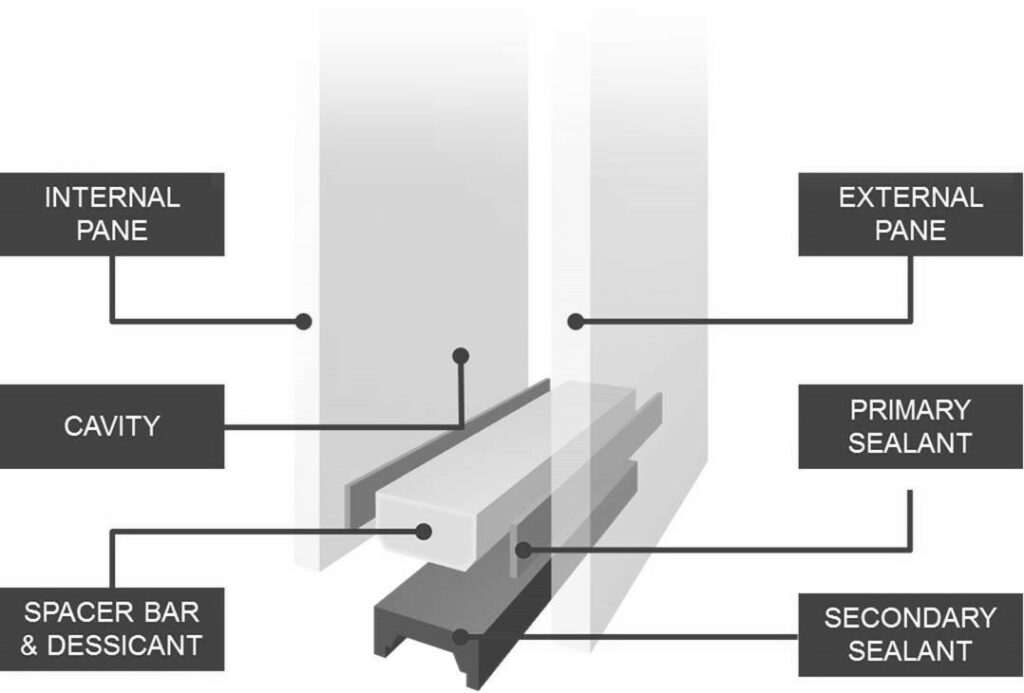
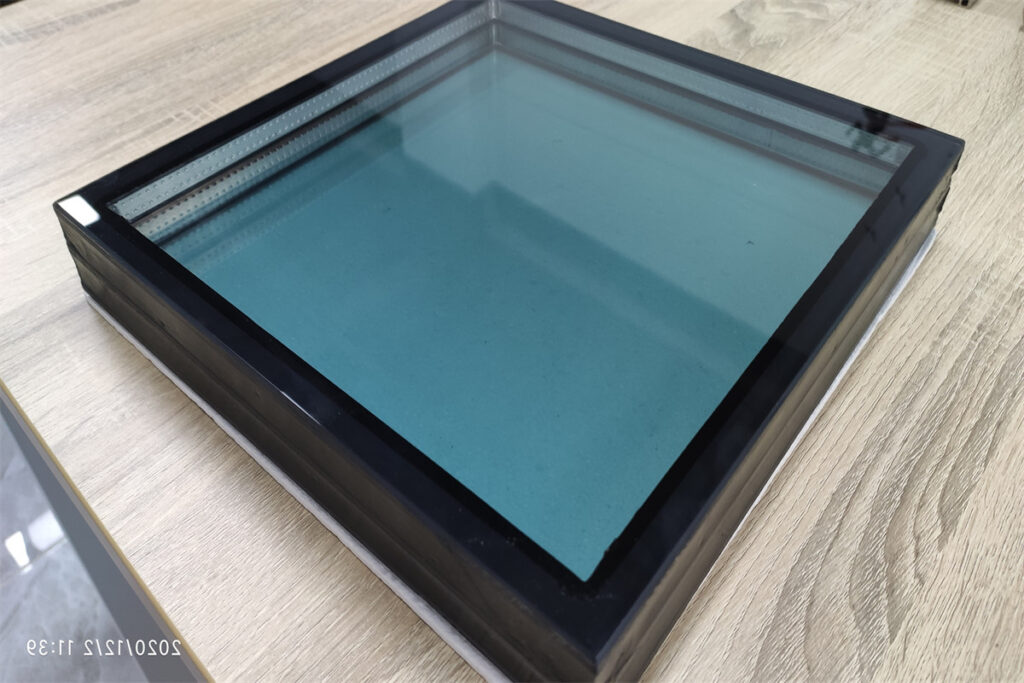
- Increased Wind Pressure Resistance: The glass’s resistance to wind pressure is 15 times that of a single-pane glass, making it suitable for curtain walls that bear wind loads.
- Reduced Risk of Spontaneous Breakage: The cold processing and bonding method used in producing insulated glazing reduces the risk of spontaneous breakage.
- Stable Coating: Coatings on insulated glazing glass remain intact due to the dry and sealed air environment, preventing long-term exposure to the atmosphere.
- Crack Resistance: DGU glass is less prone to cracking, even in conditions of significant temperature differences.
- Application Range: Suitable for high-end building doors and windows, ceilings, and soundproof requirements in schools, hospitals, sports arenas, television and radio recording studios, and also used in refrigeration appliances, and super yachts.

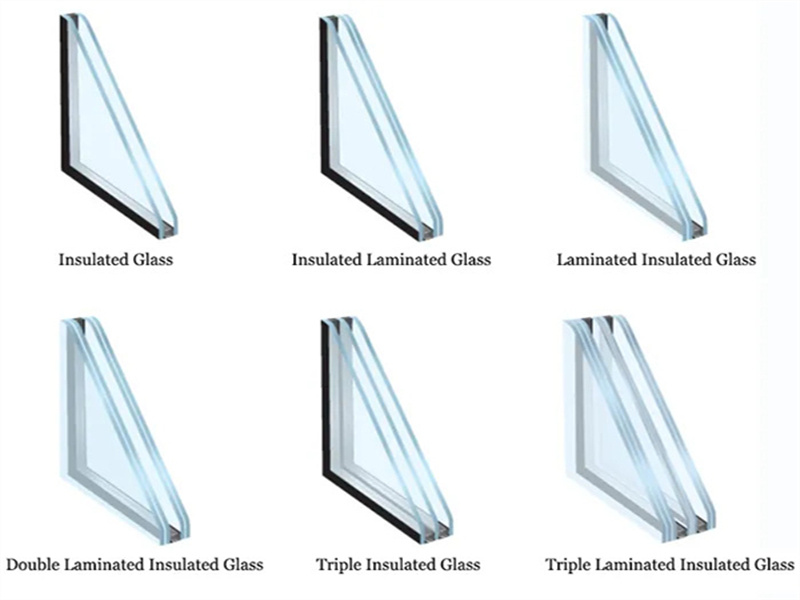
The working principle of insulated glazed glass
Due to the presence of a desiccant that can adsorb water molecules inside the insulated glazed glass, the gas within remains dry. Even as the temperature drops, the interior of the IGU unit does not experience condensation. Simultaneously, the dew point on the outer surface of the double glazing unit also increases.
For example, when the outdoor wind speed is 5m/s, indoor temperature is 20°C, and relative humidity is 60%, a 5mm glass starts to condense at an outdoor temperature of 8°C. In contrast, a 16mm (5+6A+5) insulated glazed glass under the same conditions begins to condense at an outdoor temperature of -2°C, and a 27mm (5+6A+5+6A+5) triple-layer insulated glazed glass starts condensing at an outdoor temperature of -11°C.
Energy transfer in IGU glass occurs through three main mechanisms: radiation transfer, convection transfer, and conduction transfer.
Radiation Transfer
Radiation transfer involves the transmission of energy through rays in the form of radiation, such as visible light, infrared, and ultraviolet radiation. This type of energy transfer is similar to the transmission of sunlight. Properly configuring insulated glazed glass and maintaining an optimal thickness for the airspace between the glass panes can significantly minimize energy loss through radiation, thus reducing overall energy consumption.
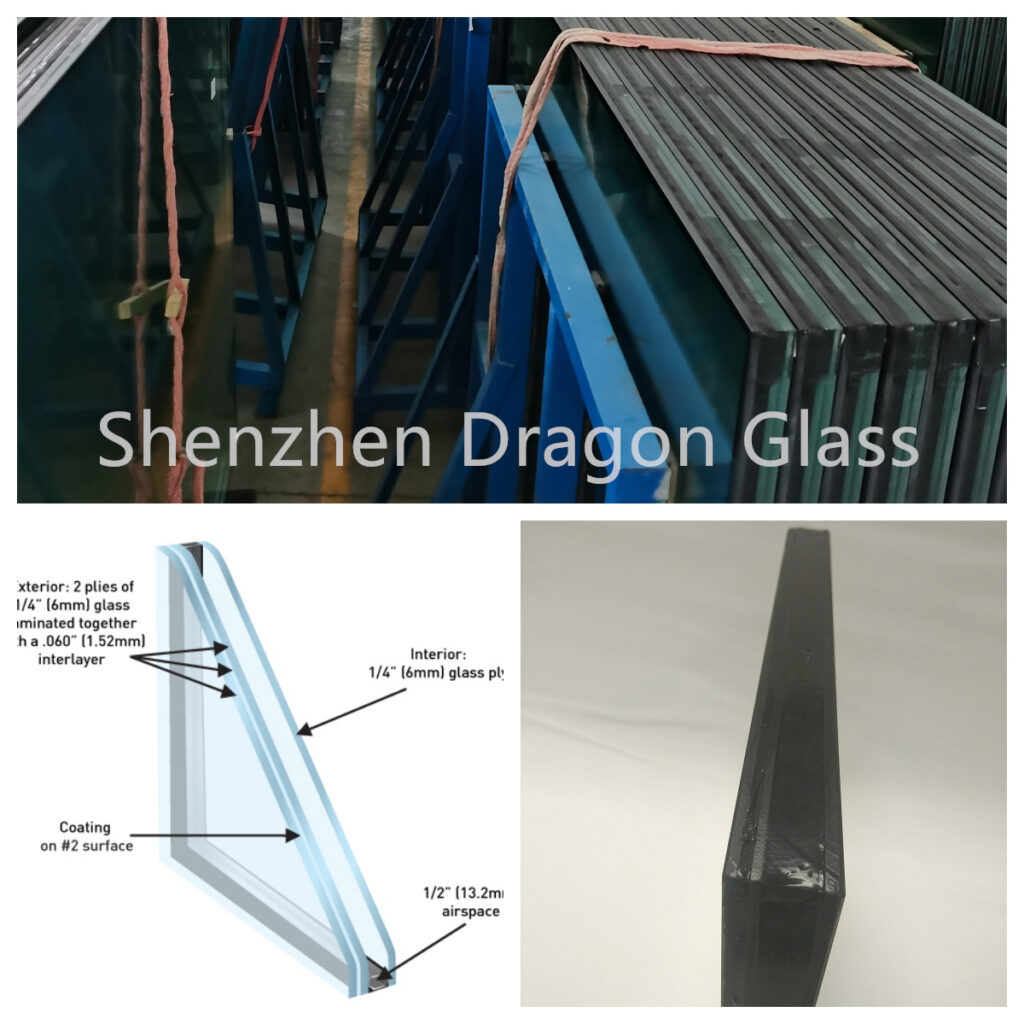
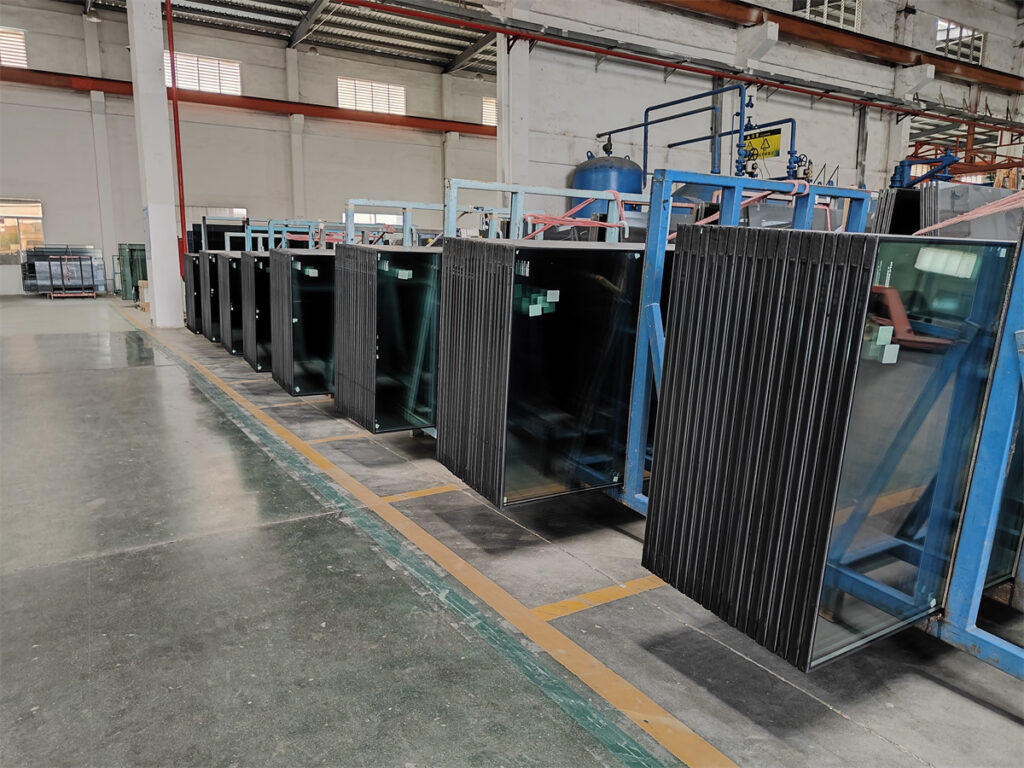
Convection Transfer
Convection transfer occurs due to temperature differences on both sides of the glass, causing air to descend on the colder side and rise on the warmer side, resulting in air convection and energy loss.
Several factors contribute to this phenomenon:
- Firstly, poor sealing between the glass and the surrounding frame system allows gases inside and outside the window frame to directly exchange, leading to convection and energy loss.
- Secondly, the unreasonable design of the internal spatial structure of insulated glazed glass causes the internal gas to undergo convection due to temperature differences, driving energy exchange and resulting in energy loss.
- Thirdly, significant temperature differences between the inner and outer sides of the window system contribute to large temperature differences inside and outside the insulated glazed glass. Air, aided by the effects of cold radiation and heat conduction, first generates convection on both sides of the insulated glazed glass and then transfers energy through the entire insulated glazed glass, resulting in energy loss. Properly designed insulated glazed glass can reduce gas convection, thereby minimizing energy loss through convection.
Conduction Transfer
Conduction transfer involves the movement of molecules within an object, driving the movement of energy to achieve transfer. This is similar to using an iron pot for cooking or an electric soldering iron for welding. In the case of insulated glazed glass, energy transfer occurs through the glass and the air inside.
It is known that the thermal conductivity of glass is 0.77 W/mK, while that of air is 0.028 W/mK. This indicates that the thermal conductivity of glass is 27 times that of air. The presence of active molecules, such as water molecules, in the air significantly influences the energy conduction and convection transfer performance of insulated glazed glass. Therefore, improving the sealing performance of insulated glass is a crucial factor in enhancing its thermal insulation capabilities.
There are many items for custom insulated glass
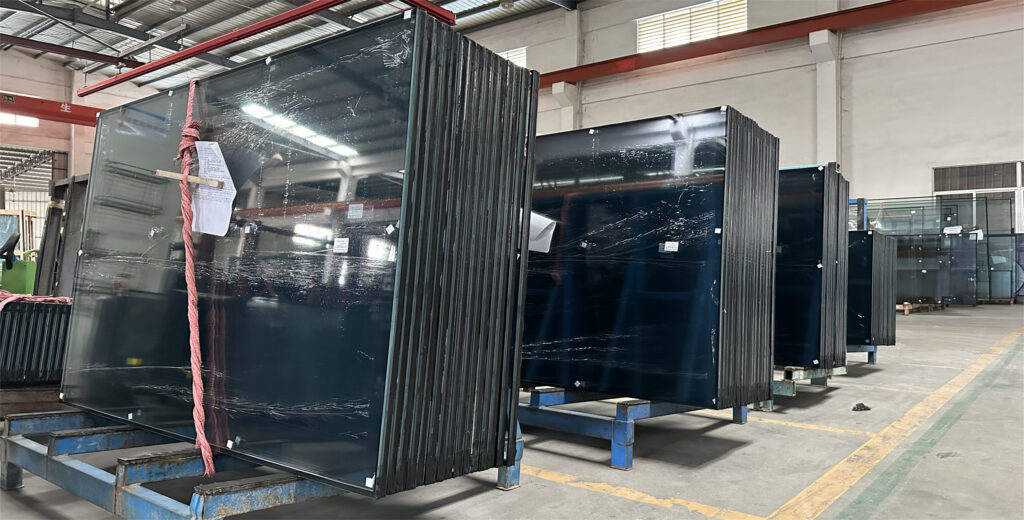
Double glazing unit
Double glazing unit, also called insulated glass unit, which often use two panes of glass to reach, are a common use type during projects.
To learn more information, you can visit here in our website.
Laminated insulated glass
Laminated IGU glass, also called laminated insulated glass unit, is one of the panes of IGU glass, it shall be float laminated glass or tempered laminated glass, this can give you more options during your projects.
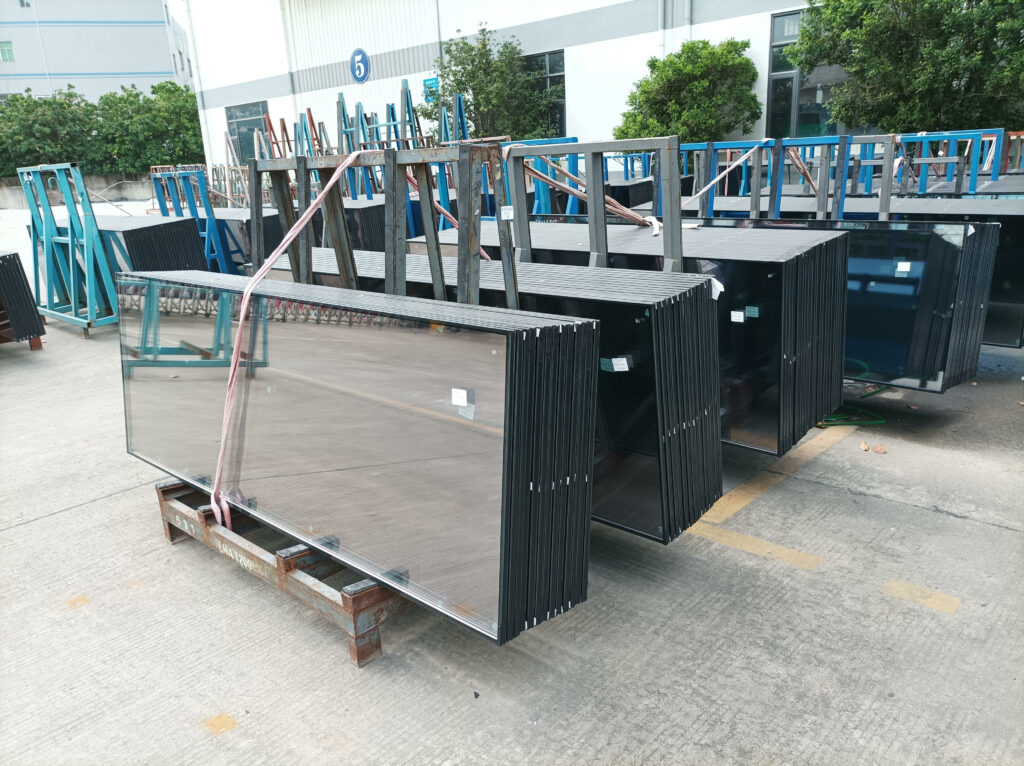
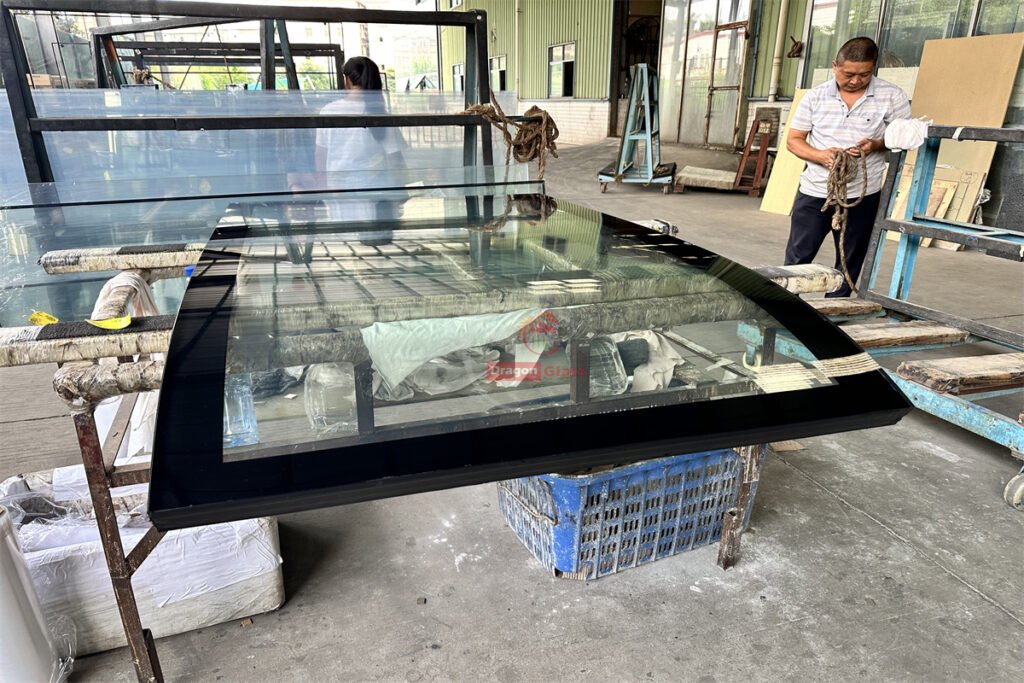
Curved insulating glazing
Curved insulated glass can realize different effects in the building, the minimum radius of curved tempered glass can reach 400mm.
Here Dragon Glass only shared 3 types of IGU glass, which very hot sale recently, if you have more requirements on other types of IGU glass, let us know, we can reply very soon.
